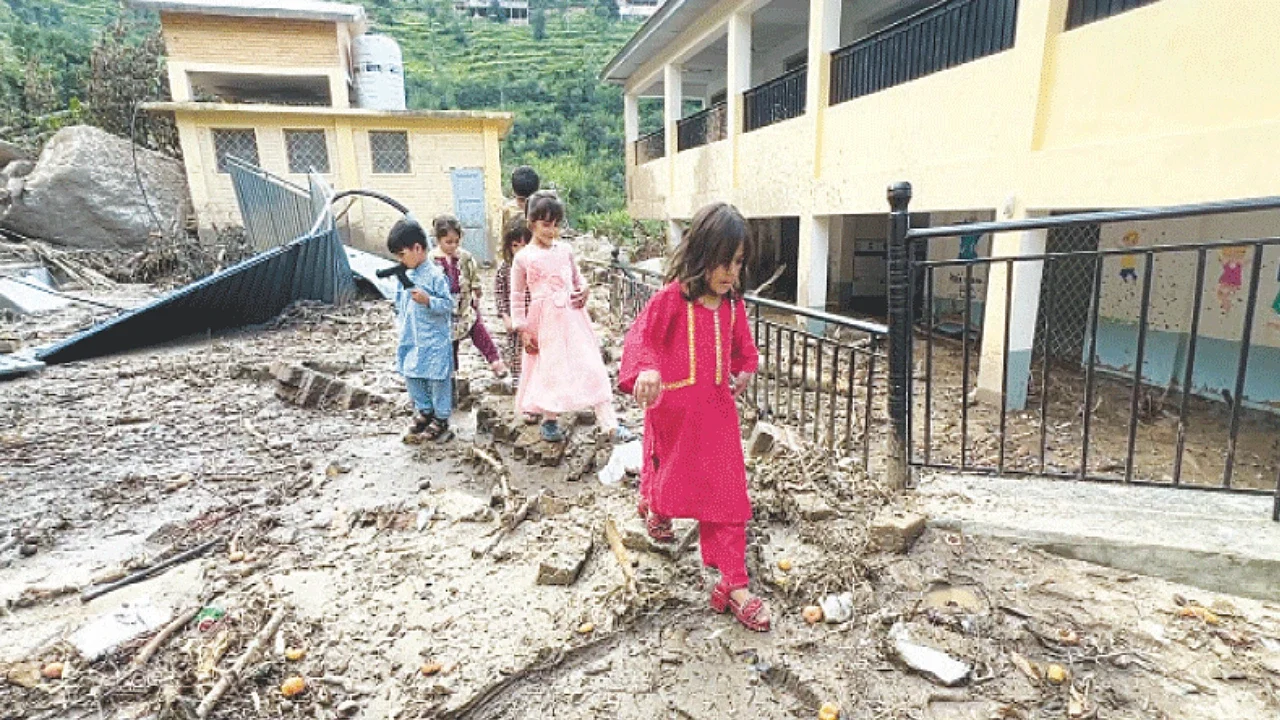By Abdul Ghani
The devastating floods of 2025 have hit Pakistan’s health and education systems hard, leaving more than 2,500 public facilities severely damaged.
According to the Planning Ministry’s Preliminary Assessment Report, the destruction of health centers and schools has left millions without essential services, deepening the crisis for those in affected areas.
Massive Destruction of Health and Education Facilities
The report highlights that 243 health facilities and 2,267 schools across flood-affected regions were either destroyed or severely damaged, with combined losses estimated at Rs7 billion.
This includes Rs2 billion in health infrastructure and Rs5 billion in educational infrastructure. The flooding has disrupted access to critical services, threatening to undo years of progress in human development.
“The widespread destruction has significantly disrupted access to essential services, particularly in healthcare, water, sanitation, and education,” the report notes. “These disruptions contribute to weakened community resilience and long-lasting effects on learning outcomes.”
Health Crisis in Flood Relief Camps
Health authorities are facing major challenges in overcrowded relief camps, where disease outbreaks are spreading. Diarrhoeal diseases, malaria, dengue fever, skin infections, and respiratory illnesses have become major threats. These issues are worsened by the collapse of water and sanitation systems.
Vulnerable groups, including women, children, and the elderly, are most at risk. The report states that over 662,000 people have received treatment in temporary medical camps set up by provincial governments, NDMA, and the armed forces. However, many rural communities remain inaccessible due to damaged roads and bridges.
Education Disruption: A Generation at Risk
On the education front, thousands of schools—especially in Punjab and Sindh—have been destroyed or converted into temporary shelters. This has caused a major disruption in the academic calendar for hundreds of thousands of students.
With many schools still closed, there are growing concerns about increased dropout rates and widening educational disparities, particularly for girls in rural areas.
The Ministry has emphasized that recovering the education sector requires not only rebuilding schools but also providing psychosocial support to children affected by the trauma.
“Reconstruction of schools must integrate disaster-resilient designs—raised foundations, better drainage, and alternative energy supplies—to withstand future floods,” the report recommended.
Urgent Health Sector Rehabilitation Needed
Health experts cited in the report have called for the urgent rehabilitation of basic health units and rural health centers, along with the deployment of mobile clinics to underserved areas. The report also urges international agencies to provide vaccines, diagnostic kits, and clean-water systems to prevent secondary crises.
Rebuilding Lives: A Long-Term Effort
The Planning Ministry referred to the floods as a “human-development emergency,” stressing that rebuilding hospitals and schools is central to restoring normal life. It has urged federal and provincial authorities to dedicate specific funds in the rehabilitation budget to health and education recovery.
Without swift action, the report warns that the impacts of the disaster, including malnutrition, disease, and loss of education, could last much longer than the physical rebuilding of infrastructure.
“The indirect impacts—malnutrition, disease, and learning loss—may persist far longer than the physical reconstruction period,” the document concludes.
Looking forward, the Planning Ministry has pledged to ensure that future development planning includes stronger water, sanitation, and hygiene systems (WASH), emergency preparedness in schools, and more resilient public health infrastructure. The government’s goal is to protect human welfare and strengthen the country’s resilience against future climate shocks.
“Rebuilding lives is as critical as rebuilding walls,” the report stated, reaffirming the government’s commitment to ensuring the well-being of its people in the face of ongoing challenges.
Author Profile
-
Abdul Ghani is a sharp analyst focused on Pakistan's industrial transformation. His reporting reveals the textile sector's pivot from basic cotton to high-growth value-added apparel.
Ghani's work underscores the triumph of knitwear and garments in boosting exports, while warning policymakers to tackle energy costs to secure long-term global competitiveness.





